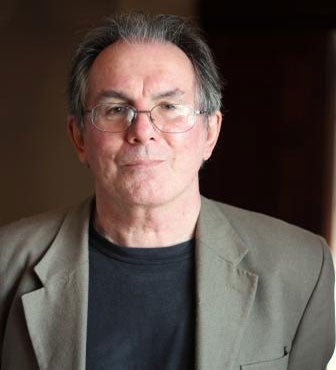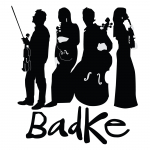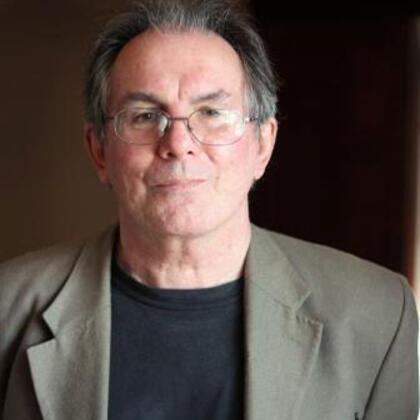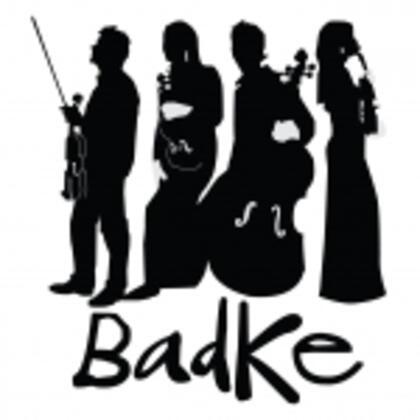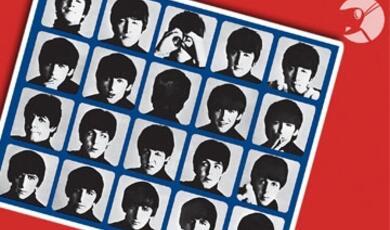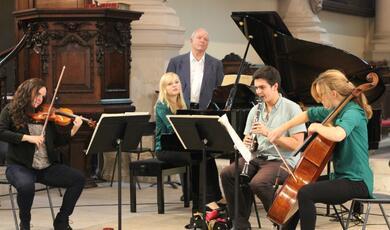Ludwig van Beethoven Op 95 in F minor
Share
- Details
- Transcript
- Audio
- Downloads
- Extra Reading
This quartet, which was composed in 1810 or 1811 and is his last before the so-called "late" quartets that crowned his final years. It is sometime nicknamed the "Serioso" (a strange, invented word which makes up part of the typically loquacious tempo designation of the third movement: "Allegro assai vivace ma serioso"), and is one of Beethoven's most restrained and austere quartets: a piece that he later suggested was more appropriate for private performance than for concert renderings.
Download Transcript
Beethoven: Quartet in F minor, Op. 95
Professor Roger Parker
30/6/2010
We've come to the last lecture of this year's series, and indeed my last lecture ever as Gresham Professor of Music. It might (to me at least) have seemed fitting to end with a personal flourish: with a work or composer from among those with whom I've spent my professional life, and thus with a Verdi or even a Donizetti string quartet. But my subject this year has been the string quartet in Vienna, and no amount of musicological ingenuity or special pleading is going to demonstrate that either of these worthy gentlemen could by any stretch of the imagination be thought Viennese; and this even though Donizetti was maestro di cappella in Vienna for a few years in the early 1840s, and even though both he and Verdi were-to the continuing irritation of those who championed the local tradition-immensely popular there with the general musical public. Clutching for further straws, I'm also reminded that Verdi claimed in his twilight years that he kept the scores of Haydn's, Mozart's and Beethoven's quartets ever near his bedside. Quite what he did with them is not specified, but those of you who have visited the Verdi bedchamber in his villa-cum-shrine at Sant-Agata, near Parma, will know that those scores do indeed grace the Verdian bedchamber to this very day. My guess, though, is that these eminently prestigious items were put in place sometime after the villa's famous occupant had transferred to his permanent, celestial residence; and were put there to give credence to Verdi's blatant claim for a piece of the fin-de-siècle cultural high ground. Whatever the case, it's clear that I can't end with my beloved Italian opera. I can, though, at least be comforted by the fact that a good part of the reason why these two operatic masters wrote quartets at all was because of the composer we will address today. When you talk of string quartets, after all, it's never long before the conversation turns, as it turns today, to Ludwig van Beethoven.
Indeed, and as I've mentioned several times already in this series of lectures, the image of Beethoven is critical not just to the history of the string quartet, but also to our whole idea of what constitutes 'classical' music. Historically, he is always regarded as the pinnacle of what we still call the 'classical' style, whose final flourish was in Vienna from around 1780 to around 1830. But, more than that, the reputation acquired by his music after his death was critical to the collection of attitudes and practices that still tenuously survive in today's concert culture. In other words, that culture that was born in the wake of Beethoven's music, and has continued to hold it dear, even down the beleaguered present. Why this came about is a question too complex for me to address here in any detail. Some unreconstructed souls might want to see it merely as the unsullied result of his musical genius, streaming forth from the works in question, aided only by selfless performers whose sole purpose was and is to communicate the authentic voice of the master. But for most of us these days such a picture is complacent and, above all, simplistic. We know from the vagaries of reception history over the centuries-from the fact that one generation's idea of 'great composers' can differ wildly from another's-that to maintain anyone in the pantheon of musical masters, to keep them on display in what one writer has called the "imaginary museum of musical works", takes a vast array of propitious circumstances, not all of them purely musical.
Part of this pantheon-maintaining work, for example, is done by critics and other cultural commentators, who supply and then adjust as necessary the image of the composer in question-keeping it suitable to the times. In Beethoven's case, a critical element has long been the story of his titanic creative struggle, something easily dramatised by the dividing of his life into three distinct periods, that of youth, maturity and old age. Such divisions did not start with Beethoven: another famous recipient near the same time was the great German literary figure Goethe. (I might add, incidentally, that Beethoven and Goethe actually met one another and, perhaps not surprisingly, didn't hit it off: Goethe thought Beethoven was wild and ill mannered; Beethoven thought Goethe was too fond of courtly manners; both had a point.) In Beethoven's case, the key period in this tripartite scheme-the one above all responsible for his pre-eminence in the later nineteenth century-was the middle one, often called his 'heroic' phase and including works such as the 3rd and 5thsymphonies, the Op. 59 string quartets, the violin concerto and the 'Waldstein' and 'Appassionata' piano sonatas. It was above all the works of this period that put in place a particular, and peculiarly potent, image of Beethoven. A key adjective, used again and again in dealing with the effect of his music in the later nineteenth century, was 'sublime': craggy, awe-inspiring, quite different from the merely beautiful music of the period that preceded him. Another vital term was 'difficulty'. Beethoven's music was notoriously hard to perform and, in particular, hard to listen to, qualities that would have been seen as distinctly negative in the eighteenth century. But when it came to Beethoven the difficulty of the compositions was celebrated rather than decried; indeed, the evident rigours of his style succeeded in placing him in the forefront of a new sense of hierarchy between the various participants in a musical event. During the eighteenth century, it seemed self-evident that listeners were superior to performers and above all to composers: the former, after all, were socially superior, and were paying for the event in question, had brought it into being; composers were on the lowest rung, being responsible for supplying what was then regarded as the most ephemeral and least prestigious of the arts. But in the nineteenth century, with its increasing sacralisation of art, and with music's position among the arts gaining ever greater ascendency, this hierarchy was overturned. The audience were still paying, but now they were a collective, and increasingly came to think that their responsibility, their duty even, was to worship the composer in attentive silence. If they found Beethoven's music difficult, and they certainly did, then that increasingly was taken to be a sign of their inadequacy and of the composer's forward-looking genius.
Nowhere was this new reputation more potently expressed than in the string quartets, which Beethoven wrote in all three of his 'periods'. His youthful set of six quartets, Op. 18, were composed in the very last years of the eighteenth century and are reminiscent of Haydn and Mozart. The three quartets of Op. 59 are, as mentioned, emphatically of the 'heroic' period: written in 1806, they are longer, symphonic-style works, making extreme demands of the performers and in many ways proving more taxing on listeners than anything in the medium previously. Finally, and emblematic of Beethoven's last period, came the so-called 'late' quartets: five composition all written in the last few years of the composer's life and as idiosyncratic and inward-looking as any other works of this period. It's partly because of the prestige of all these Beethoven quartets that the string quartet remained such a powerful and constant object of emulation during the later nineteenth century and beyond. In an earlier lecture I've already discussed the influence of the so-called Quartet Societies that emerged in Vienna, Paris, London and elsewhere in the years around Beethoven's last years: societies that were explicitly formed to allow Beethoven's quartets to receive suitably reverential and carefully-prepared performances, and that proved so immensely influential on concert culture generally.
In this brief résumé, I've deliberately not mentioned the work that is our focus today, which is the Quartet in F minor, Op. 95. Its omission was easy in that the quartet is something of an anomaly in the grand narrative of Beethoven's life: it's one of those pieces not falling conveniently into the 'three periods', and is usually thought of as inhabiting a transitional period between the 'heroic' and the late styles. As it happens, and not coincidentally, its composition followed some tumultuous events in Beethoven's life and times, ones that in part caused him to turn away from the 'heroic' style and that caused a serious hiatus in his compositional output. Let's pause for a moment over those circumstances.
1809, the year before the composition of Op. 95, Beethoven's residence in Vienna, a city in which he had lived his entire adult life, was called into question. In spite of his now very severe deafness, he received a lucrative job offer from elsewhere (as Kapellmeister at Kassel), and with typical financial astuteness he parlayed this into a lifetime's annuity from three wealthy Viennese admirers, prominent among whom was Archduke Rudolph (the Austrian Emperor's youngest brother, and later dedicatee of the so-called 'Archduke' Piano Trio). No sooner had this been settled, however, than a severe crisis descended on the city. For the second time in the space of a few years, Napoleon's armies again bore down on Vienna; when French occupation was resisted, the invaders spent one dreadful night bombarding the city into submission and then took residence for a two-month period, causing the occupants considerable financial hardship. During the bombardment, Beethoven reportedly hid in a cellar, protecting his head with pillows. he emerged unscathed, but the occupation saw his livelihood again threatened by the exodus of his aristocratic supporters and the drastic deflation of his annuity.
The composer's reaction to these events might seem on the surface very strange. He buried himself in, of all things, the rigorous study of strict counterpoint, copying out some two hundred pages of ancient contrapuntal treatises and immersing himself in the so-called stile antico, a mode overwhelmingly associated with old-fashioned religious music. On the surface, this preoccupation can be traced to practical matters: Beethoven had agreed to take on Archduke Rudolph as a composition student, and was brushing up on his old counterpoint skills, long since fallen into disuse in the 'heroic' period. But of course there were deeper reasons. Many have seen this turn to counterpoint, which had a critical impact on his 'late' compositional manner and in the waning of the 'heroic' style, as a sign of a retreat from the everyday world, one caused by the composer's deafness and also by the tumultuous political events surrounding him. This may indeed be the case, but recent commentators have suggested that the stile antico also had a political edge, representing for Beethoven a return to old, conservative Austrian values in times of adversity, and in particular an angry rejection of the inevitably French-tinged revolutionary leanings of his maturity. It may also be that he was already thinking of posterity. As a contemporary journal put it only a few years later, 'religious concepts carry the stamp of eternity, and music cannot express this better than by the marvellous art of counterpoint', a statement that Beethoven would have derided some years previously, but that now seemed to chime with his preoccupations.
The year that followed these events, in which Beethoven reached his fortieth year, saw one other curious episode. After a lifetime of mostly disastrous infatuations, Beethoven suddenly proposed marriage to the niece of one of his doctors. She was called Therese Malfatti, and we know little about her, apart from the fact that she was half the composer's age and that her family evidently (and probably wisely) rejected Beethoven's offer. It was in the aftermath of this event, in the summer of 1810, that Beethoven-on travels away from Vienna, possibly made in order to forget the disappointment of this rejection-composed his Quartet in F minor. On the autograph manuscript, he entitled the work, with clear intent if with distinctly homemade Italian, the 'Quartett serioso' (the Italian adjective meaning 'serious' is serio), and in a later letter he clearly marked it out as a radical departure from the large-scale, concert-symphonic quartets of the Op. 59 group, saying that it was 'written for a small circle of connoisseurs and never to be performed in public'. It was dedicated to an old aristocratic friend, Count Nikolaus Zmeskall, an amateur cellist and quite possibly one of the 'small circle of connoisseurs' for which the quartet was intended.
I mentioned some time ago that Beethoven's music generally became known for and-what is more surprising-increasingly valued for itsdifficulty: the obstacles it put in the way of both performers and listeners. This was a trait of which the composer was well aware: one of his most famous aesthetic pronouncements was that "what is difficult is also beautiful, good and great". In this regard, the Quartet Op. 95 is a prime exhibit. As its title and minor mode suggests, it is certainly one of Beethoven's most sombre quartets; but it is also, and by a margin, his shortest and most condensed. This much is announced immediately in the extraordinary beginning of the first movement, which offers us a bewildering succession of contrasting ideas and textures: first an angry unison figure; then a moment in which dotted-rhythms predominate; then a gentle chorale texture in the upper strings, but with the opening figure erupting in the cello. What's more, all of these abrupt transitions are separated by lengthy pauses filled with tension and suspense. And that's just the first eight bars, the first 15 seconds of the work! As we might expect from Beethoven, that tumultuous opening introduces us to the main thematic material of the entire movement, but what follows it places these ideas in every varying combinations, and within a tonal argument that is extremely unconventional even by Beethovenian standards, with sudden dives into unexpected keys a particular feature. A further prominent feature adds to the demands of the piece: what we might call the 'disposition' of the quartet, the role each instrument plays, is highly unusual, and as changeable as the musical substance. Virtually every bar sees a new configuration, routinely placing instruments in unlikely and hard-to-voice combinations. A good example comes immediately after that first onslaught of motives: the viola takes on the bass part (with more angry reiterations of the opening motive) while the cello is placed above even the second violin. The sense of music out of joint, of deliberate angularity and strain, is everywhere palpable.
The second movement, set as a gentle Allegretto, is the one moment of relaxation in the quartet, and features two musical modes that will become prominent features of Beethoven's 'late' style. The first is introduced by a 'mezza voce' descending scale for the solo cello, perhaps a small homage to the cellist dedicatee of the work but sounding for all the world like a throw-back to the world of Corelli or Purcell. This serves as introduction to a lyrical inspiration of great simplicity, one of those gentle hymns that flow forth from so many of Beethoven's slow movements in his last years. The hymn's antique repose then alternates with one of the first fruits of that long contrapuntal study Beethoven undertook in the wake of the Napoleonic invasions: a fugal texture of considerable complexity (there are countersubjects and inversions in the best ancient manner), but one that nevertheless manages to gesture towards, and even share a mood and musical material with, the simple, hymn-like tune of the opening.
After the lyrical pause of the Allegretto, we return to the hectic mood with which the quartet was launched. The third movement announces this with its tempo marking, 'Allegro assai vivace, ma serioso' (again that fake Italian word which must have had some deep resonance for Beethoven). The movement is probably best described as a kind of Scherzo and Trio, but its constituent parts are clearly derived again from that tumultuous opening to the first movement: the driving march of the Scherzo is dominated by tense pauses and an angry dotted figure, while the Trio is characterised by what I earlier called a 'chorale' texture, although this time with anxious figuration from the first violin interrupting the sense of repose. Introduced by a brief Larghetto, the last movement is an intensified repetition of the first in mood and texture; but listen out for its remarkable coda, which resembles Mendelssohnian fairy music in its wild agitation.
As that somewhat breathless account doubtless illustrates, this is not a quartet for the fainthearted, whether performers or listeners. To what extent it reveals his state of mind in 1810 is hard to say. Certainly the desperate political instability of the Napoleonic years combining, in that aborted marriage project, with a realisation that anything resembling a conventional domestic life was outside his grasp; all this was tumultuous, and would lead to a severe compositional hiatus in the years that followed. But its connection to biographical events, while always compelling, remain mysterious. In that sense, though, it is a good illustration of what made Beethoven such a compelling figure for the nineteenth century. As we know, his music was radical enough to be often misunderstood during his lifetime; but even then there were few arguments about its qualities. And in the decades that followed his death, his reputation only increased, the strangeness and difficulty of his musical personality becoming just one more potent sign of his greatness. We might put this another way and say that Beethoven's music was, for the period, unique in being so 'patient of interpretation', so able to adjust its meaning to the mores and demands of new generations. It was above all for that reason that he became the first composer in the Western classical tradition who can claim never to have been out of date, never to have been in need of revival. Today's concert can, I hope, remind us of that, and of the challenges that such a work continues to pose, almost exactly 200 hundred years after it was created.
As this is my last lecture, I need a brief coda. At the end of my first series of Gresham lectures with the Badke Quartet, some two years ago, I mentioned that the experience of working with them had been one of the most enjoyable of my professional life. It was in this sense a bold step to attempt to repeat the collaboration this year: one of the lessons of a long career (mine) has been that happy meetings of minds are not always easily restaged in other places at other times. But in this particular case I shouln't have worried: the format of these lecture recitals, after all, keeps us suitably separate; the pleasures that I received first time around have been steadily repeated, and I think (I hope) the same goes for the performers. What's more important, though, I remain convinced that our rather strict division of labour-I talk for thirty minutes; they play for thirty minutes-offers the most fruitful ground for dialogue, for experimenting with ways in which words about music can change and perhaps enrich the experience of musical listening. Musicology often has a rather fraught relationship with performance: those who deal in words about music are professionally wont to feel that they have special insights into a composer's intentions and achievements (after all, they peddle themselves as the 'experts', as repositories of knowledge); but most of them are also painfully aware that such insights have at best only a tangential effect on listeners' experiences of a work in question. And they are also reminded constantly that performers, who are often blithely unaware of the latest scholarship (and why not? they have other things on their minds, other challenges), communicate to those same listeners so much more immediately. Small wonder, in these circumstances, that musicologists are mostly happier talking to each other, and that they often adopt a special jargon that keeps non-specialists at bay. However, the Gresham project will not tolerate such inward turning: that is, for its professors, its greatest challenge and its great strength. It is, then, my greatest hope that these lectures have, if nothing else, furthered that project a little: have in this case explored a little further some of the many, many ways in which music from the now-distant past can still communicate, can still generate meaning among us, despite the formidable barriers of language and time. So here, to try the experiment one last time, is the Badke Quartet. Please join me in welcoming them: Heather Badke, first violin; Emma Parker, second violin; Jon Thorne, viola; and Jonathan Byers, cello.
Badke Quartet plays
©Professor Roger Parker, Gresham College 2010
Part of:
This event was on Wed, 30 Jun 2010
Support Gresham
Gresham College has offered an outstanding education to the public free of charge for over 400 years. Today, Gresham plays an important role in fostering a love of learning and a greater understanding of ourselves and the world around us. Your donation will help to widen our reach and to broaden our audience, allowing more people to benefit from a high-quality education from some of the brightest minds.


 Login
Login
